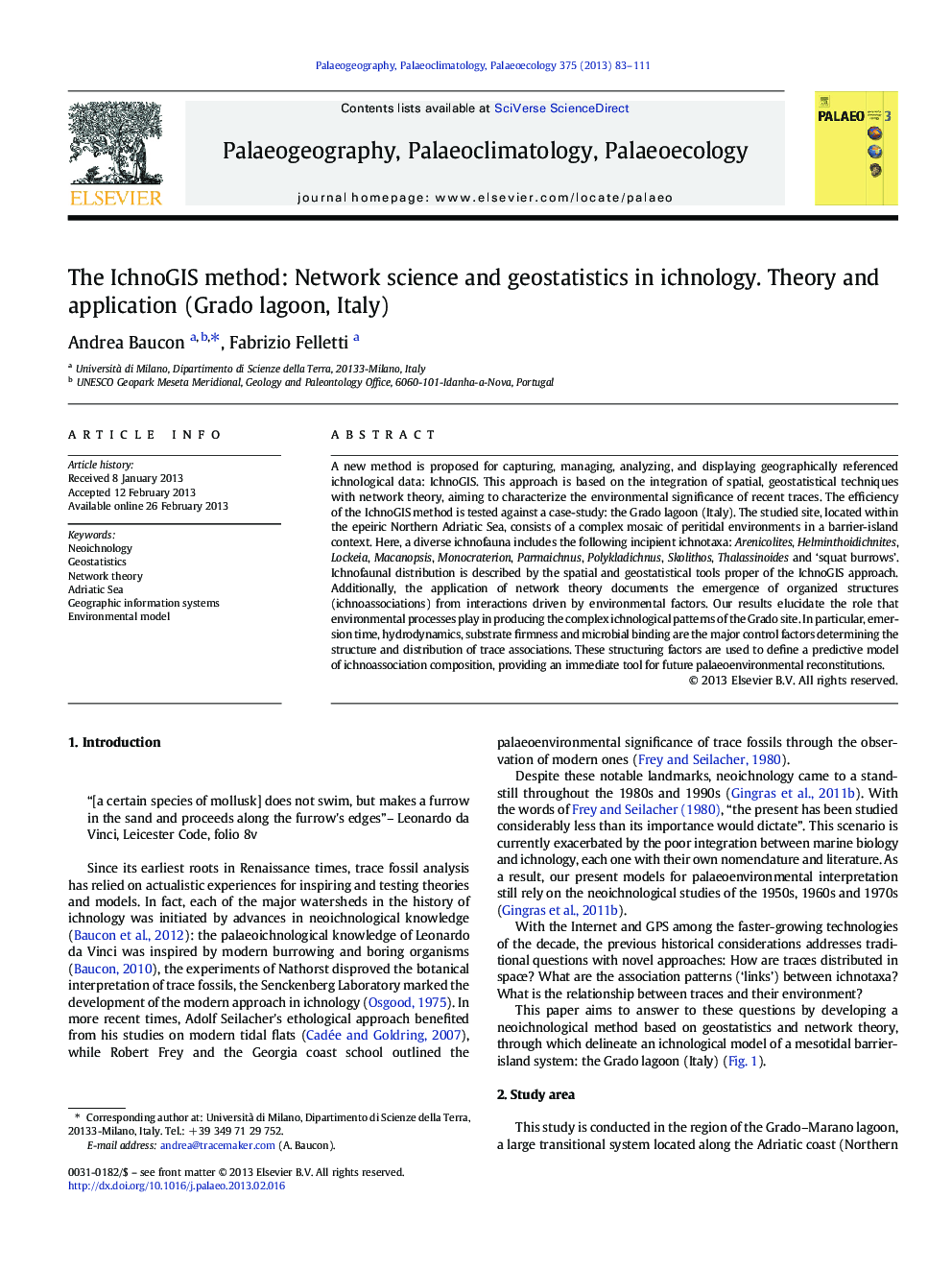| Article ID | Journal | Published Year | Pages | File Type |
|---|---|---|---|---|
| 4466658 | Palaeogeography, Palaeoclimatology, Palaeoecology | 2013 | 29 Pages |
A new method is proposed for capturing, managing, analyzing, and displaying geographically referenced ichnological data: IchnoGIS. This approach is based on the integration of spatial, geostatistical techniques with network theory, aiming to characterize the environmental significance of recent traces. The efficiency of the IchnoGIS method is tested against a case-study: the Grado lagoon (Italy). The studied site, located within the epeiric Northern Adriatic Sea, consists of a complex mosaic of peritidal environments in a barrier-island context. Here, a diverse ichnofauna includes the following incipient ichnotaxa: Arenicolites, Helminthoidichnites, Lockeia, Macanopsis, Monocraterion, Parmaichnus, Polykladichnus, Skolithos, Thalassinoides and ‘squat burrows’. Ichnofaunal distribution is described by the spatial and geostatistical tools proper of the IchnoGIS approach. Additionally, the application of network theory documents the emergence of organized structures (ichnoassociations) from interactions driven by environmental factors. Our results elucidate the role that environmental processes play in producing the complex ichnological patterns of the Grado site. In particular, emersion time, hydrodynamics, substrate firmness and microbial binding are the major control factors determining the structure and distribution of trace associations. These structuring factors are used to define a predictive model of ichnoassociation composition, providing an immediate tool for future palaeoenvironmental reconstitutions.
Graphical abstractFigure optionsDownload full-size imageDownload high-quality image (467 K)Download as PowerPoint slideHighlights► A new neoichnological method (IchnoGIS) is applied to a barrier-island system. ► A predictive environmental model is defined by integrating network theory with geostatistics. ► The major control factors are emersion, hydrodynamics, firmness, microbial binding. ► Ancient styles of bioturbation are coexisting with modern ones. ► Geostatistics and network theory offer new research perspectives to palaeontology.
